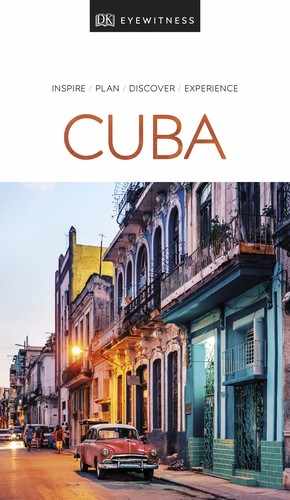experience more
Although this hotel is built in the style of late 19th-century Havana Neo-Classical architecture, its soul is mudéjar (Moorish). The fine ochre, green and gold majolica tiles of the interior were imported from Seville, the foyer is decorated with Andalusian mosaics and the wooden ceilings are reminiscent of Moorish inlay. Plus, one of the columns in the salón-café bears a classical Arabic inscription: “Only Allah is the victor.”
The Hotel Inglaterra dates from 1875, when a small hotel merged with the lively Le Louvre night spot and its adjacent ballroom. The pavement outside the hotel, known as the “Louvre sidewalk’”, was an animated meeting point for Havana liberals. It was here that the young José Martí advocated the total separation of Cuba from Spain, as opposed to more moderate liberal demands for autonomy. It’s historical importance continued as General Antonio Maceo, a hero of the wars of Cuban independence, prepared plans for the insurrection in this hotel.
Among the many illustrious guests who stayed here were the great French actress Sarah Bernhardt, star of Alexandre Dumas’ La Dame aux Camélias, and the Russian ballet dancer Anna Pavlova, here to perform at the Gran Teatro de La Habana Alicia Alonso.

t Traffic passing the Gran Teatro de La Habana Alicia Alonso
One of the largest opera houses in the world, the Gran Teatro de La Habana Alicia Alonso is part of the monumental Palacio del Centro Gallego (1915). Designed by Belgian architect Paul Belau, the structure was built to host the social activities of Havana’s large and affluent Spanish community.
The magnificent façade is decorated with four sculpture groups by the Italian sculptor Giuseppe Moretti, depicting Charity, Education, Music and Theatre. The building was constructed over the foundations of the Teatro Nuevo or Tacón, and from 1837 to the early 20th century this was the venue for performances by world-famous artists, including the Austrian ballet dancer Fanny Essler, who made her debut here in 1841. In the mid-19th century Antonio Meucci, the inventor of the “talking telephone”, worked here as a stagehand, and his invention was patented in the US, thanks to the support of the Gran Teatro’s impresario.
The theatre was inaugurated on 22 April 1915 with a performance of Verdi’s opera, Aida, and became a stage for great dramatic occasions. Sarah Bernhardt performed here in 1918, and the pianist Arthur Rubinstein the following year. Cuban composer Ernesto Lecuona and the great Spanish guitarist Andrés Segovia have also appeared.
In 1959 the Gran Teatro, though continuing its purpose as a concert hall and theatre, also became the “home” of Alicia Alonso, the great Cuban ballet dancer. She founded the dance company Ballet Nacional de Cuba, which is still based in the capital, and she was responsible for organizing the inaugral Festival Internacional de Ballet de La Habana.
After a sensitive and meticulous renovation project, which lasted two years, the theatre reopened in 2016. The building now looks particularly magnificent at night when the exterior is majestically illuminated by golden light.
Did You Know?
The bullet-holes on the Gran Hotel Manzana Kempinski façade date from the 1933 revolution.
Experience Centro Habana and Prado
|
stay Hotel Iberostar Parque Central On Parque Central, this hotel has spacious rooms and good service. U2 ⌂ Calle Neptuno e/ Prado y Zulueta ∑ iberostar.com \ Gran Hotel Manzana Kempinski Cuba’s first truly deluxe hotel has a rooftop bar, overlooking a luxurious infinity pool. U3 ⌂ Calle San Rafael e/ Monserrate y Zulueta ∑ kempinski.com \ |
The spacious area of greenery behind the Capitol was called Campo di Marte (Parade Ground) during the 19th century, because it was close to the Paseo Militar, which was used frequently for army drill. In 1928 it became known as the Parque de la Fraternidad, and it commemorates Cuba’s common roots with the other people of Latin and North America, with monuments to major historical figures such as the Mexican politician Benito Juárez, the Venezuelan Simón Bolívar and US president Abraham Lincoln.
In the middle of the park is a gate with a plaque which bears a heartfelt exhortation by José Martí: “It is time to gather and march together united, we must go forward as compact as the silver in the depths of the Andes. Peoples unite only through bonds of friendship, fraternity and love.”
Beyond the gate is a monument to American friendship and solidarity: a large ceiba – a tree sacred to both the indigenous people and the slaves taken to the New World. It was planted here around 1920, symbolizing the long-standing bond between the peoples.
In front of the square is a white marble fountain, sculpted in 1831 by Giuseppe Gaggini. The fountain is known as the “Fuente de la India” or “La Noble Habana” – an allegorical representation of the city.
Nowadays the Parque de la Fraternidad is usually full of old American cars, most of which are operated as private taxis or used for guided tours.

t Benito Juárez bust, one of the memorials in the Parque de la Fraternidad
Experience Centro Habana and Prado
Classic American cars

From open-topped Ford Model Ts from the 1920s, to the stylish Ford Thunderbird, or “T-bird”, of the 1950s, classic American cars add to Cuba’s time-warped splendour. You’ll find cars that are eight decades old on Cuba’s roads, with nearly one in six predating the revolution. These four-wheeled survivors of a bygone era are kept running by their resourceful owners, despite decades of US embargoes. Many serve as taxis and some offer sightseeing tours.
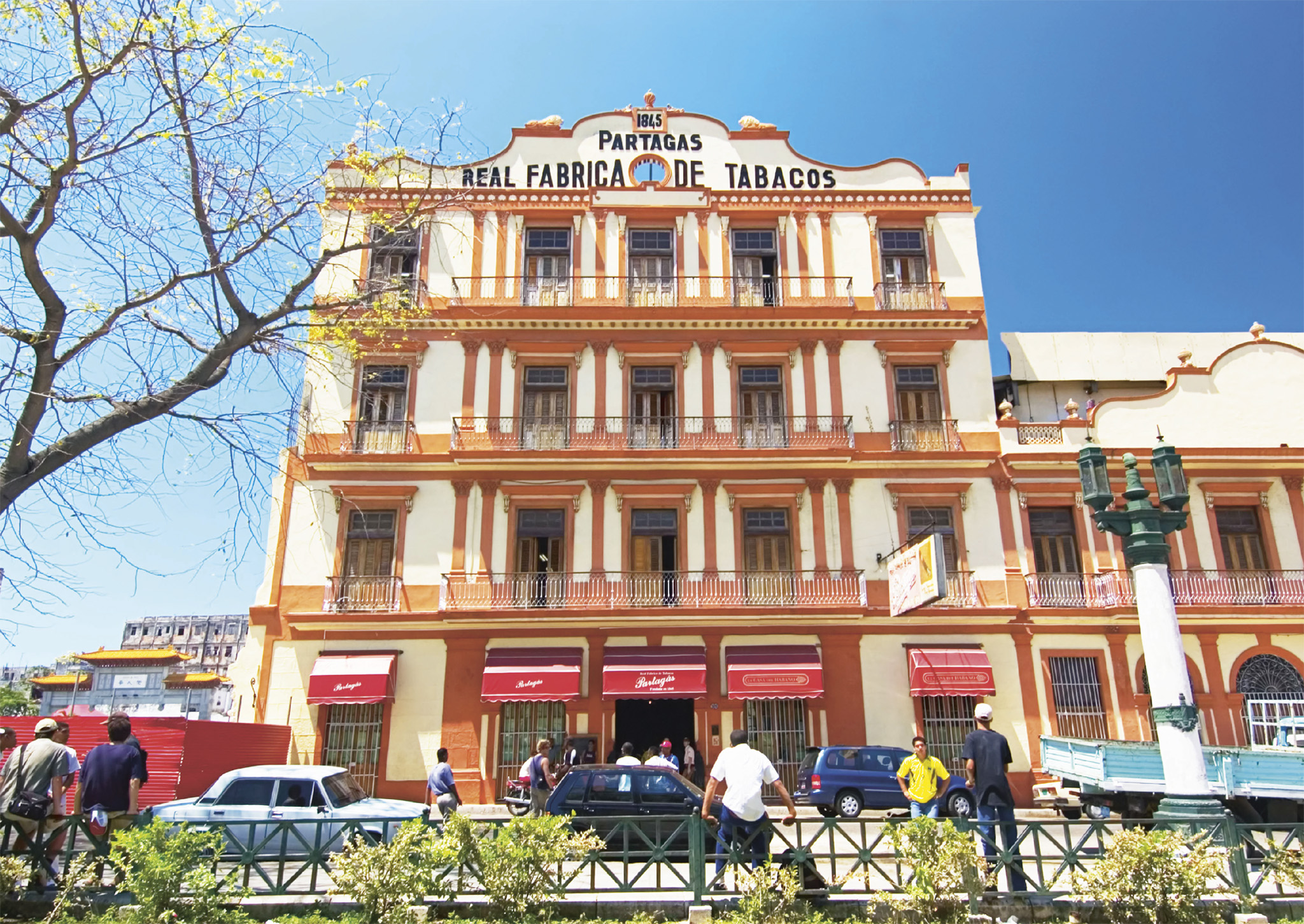
t The Neo-Classical façade of the historic Real Fábrica de Tabacos Partagás
Cuba’s largest cigar factory, with its Neo-Classical façade, is a good example of 19th-century industrial architecture. It was founded in 1845 by the ambitious Catalan businessman Jaime Partagás Ravelo, who never revealed the sources of his tobacco leaves or how they were processed. In fact, the only information that survives is that he was the first person to use wooden barrels to ferment the leaves in order to heighten the aroma.
With the profits made from his high-quality cigars, Partagás bought a plantation in the province of Pinar del Río. He wanted to oversee all aspects of the cigar-making process personally, from growing the plants to the placing of a wrapper leaf around the filler and binder leaves rolled by the torcedor. However, Partagás was assassinated in mysterious circumstances and the project failed. His factory was then purchased by another shrewd businessman, Ramón Cifuentes Llano.
On the tour, you will see dozens of people at work in the aroma-filled interior. Nowadays, there is no longer someone reading aloud to alleviate the monotony of the work by entertaining and educating the workers, as was the case in the 19th century (Partagás himself introduced this custom to Cuba), but there is a loudspeaker that alternates reading passages with music and news on the radio. Connected to the factory is La Casa del Habano, an excellent shop with a back room that is used for sampling cigars.
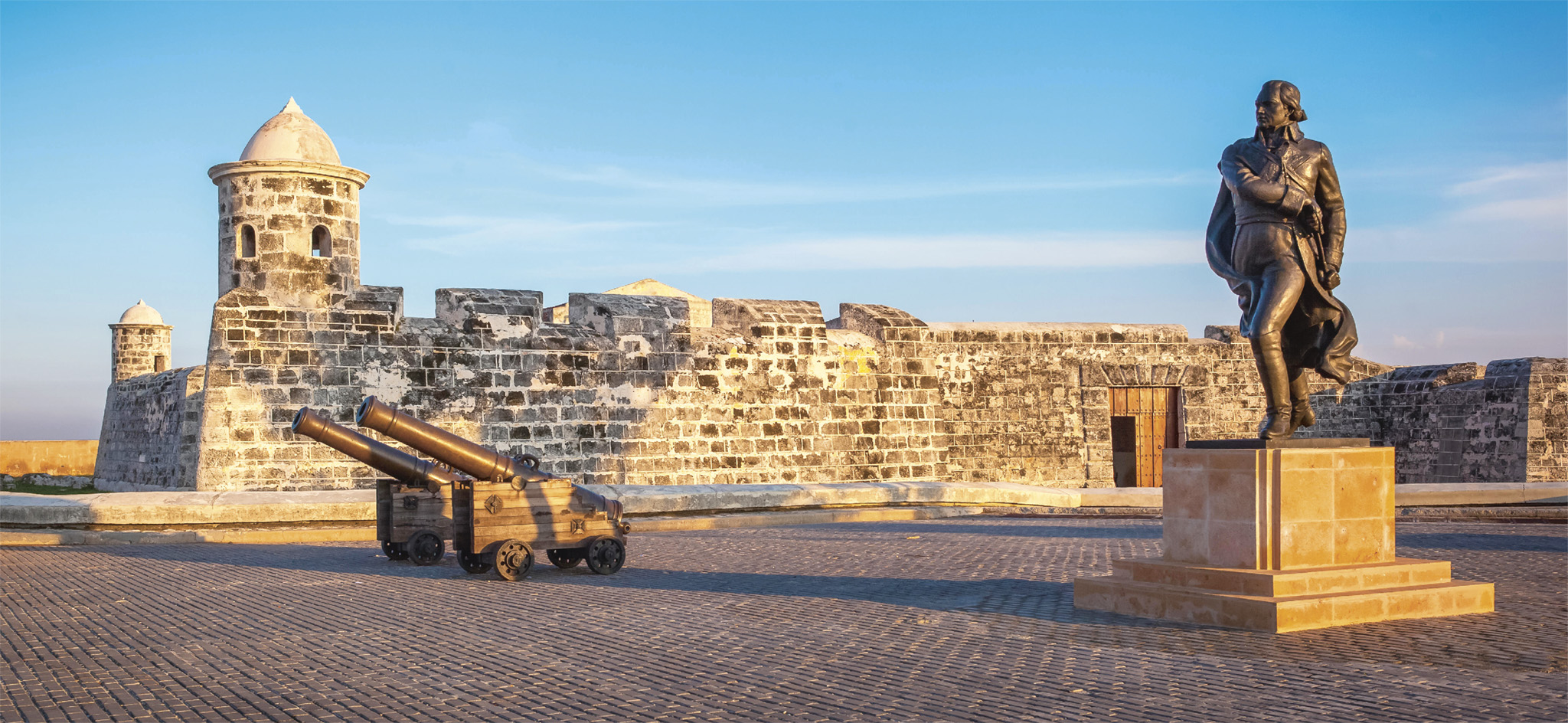
t Statue of Francisco de Miranda at the Castillo de San Salvador de la Punta
A modest fortified block on the west bank of the port entrance, this castillo (fortress) played a crucial role in the past as part of the defence system of the capital. Today, it is a modest three-room museum comprising naval-themed exhibits along with displays on the history of the fortress. Designed by Giovanni Bautista Antonelli, Juan de Tejeda and Cristóbal de Roda, and built in 1590–1630, it was part of the city’s first line of defence, together with the much larger Castillo de los Tres Reyes del Morro on the other side of the bay. A large floating chain of wooden and bronze rings, an ingenious device added by the Italian engineer Antonelli in the late 16th century, connected the two fortresses. It was stretched tightly as soon as an enemy ship was sighted, to block access to the port. In the open space in front of the Castillo are the three cannons to which the chain was tied.
The adjacent open space across the road has several attractions that are more important historically than artistically. In the middle is the equestrian statue of Generalissimo Máximo Gómez, the hero of the wars of independence, by Italian sculptor Aldo Gamba (1935). Behind this, you’ll see a dilapidated chapel. Surprisingly, this building is still in use and regularly hosts stamp exhibitions and history lectures. It originally belonged to the Real Cárcel prison, where José Martí was kept for 16 years for subversive activities against the Spanish crown. Some cells still stand, as does a section of the wall against which some medical students were executed on 27 November 1871 as punishment for rebelling against Spanish rule. A sombre cenotaph in their honour stands in the Necrópolis de Colón.

Picture Perfect
Panoramic Park
The Parque de la Punta sits in front of the fortress and is lined with benches. Come here at sunset for an awesome view of the fort. For the perfect picture, capture a brave local jumping into the sea in front of the fort.
The Museo Fragua Martiana (Museum of Martí’s Forging) preserves a portion of the former San Lázaro quarry where, in 1870, 16-year-old José Martí was forced to break rocks after being sentenced to hard labour for sedition. The small museum displays shackles and other miscellany related to Martí’s servitude and the independence movement he later led. A corner of the limestone quarry has been turned into a garden with a life-size bronze statue of the national hero. On 27 January, 1953, following Fulgencio Batista’s coup d’état, students led by political activist Fidel Castro marched with flaming torches from the Universidad de La Habana to the quarry to commemorate the centenary of Martí’s birth and demand that Batista step down; La Marcha de las Antorchas is repeated on 27 January each year. Appropriately, the site is now overseen by the Universidad de La Habana.
Experience Centro Habana and Prado
José Martí
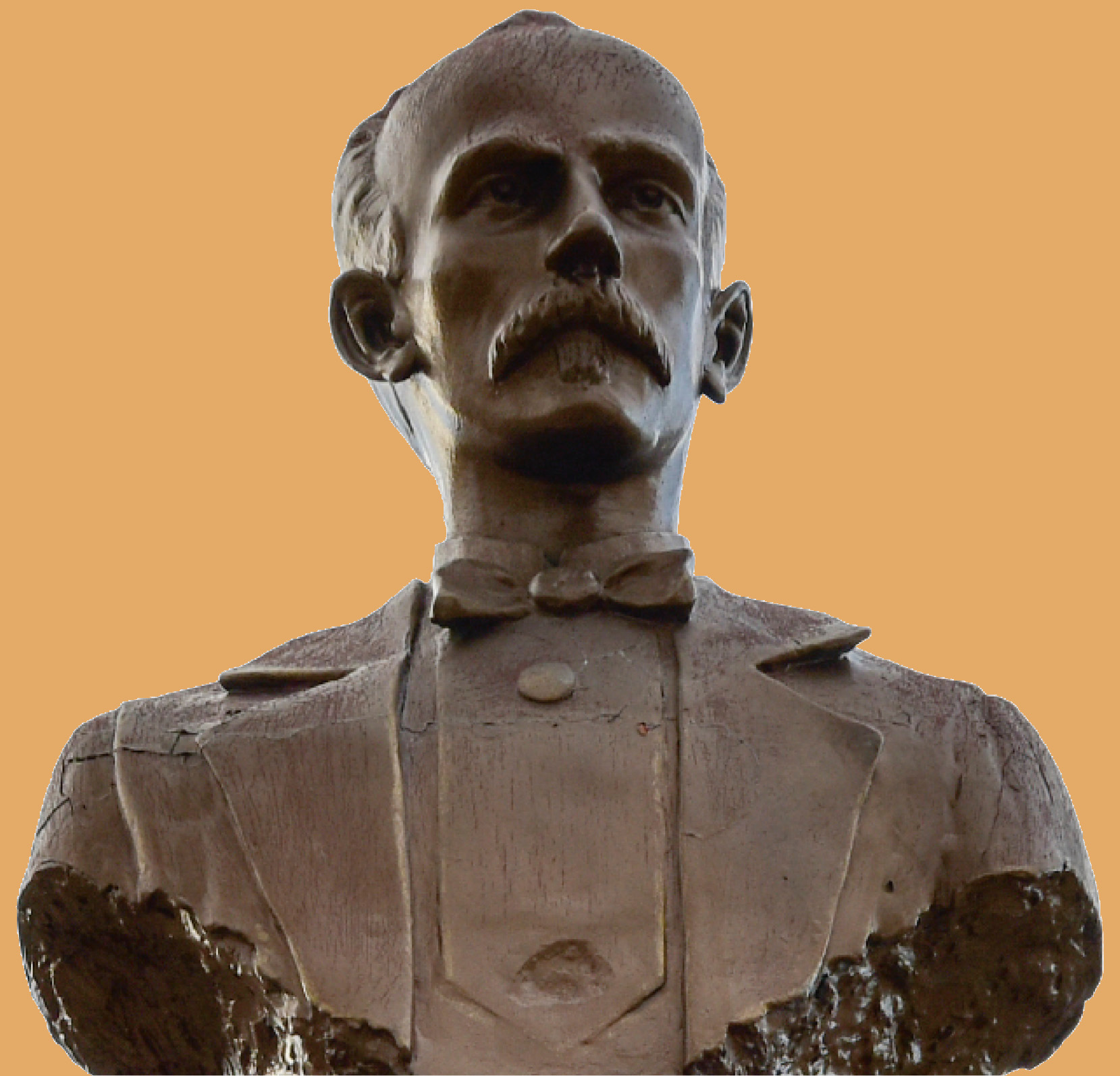
Born to Spanish parents in Havana in 1853, José Martí (below) was already taking part in anti-Spanish conspiracies by the time he went to secondary school. This led to his being deported in 1868, and exiled in 1878. Known for his vigorous writing style, he was also a Modernist poet, an activist, a politician and a sensitive interpreter of the impulses of the human soul. In 1895, when he died in battle at Boca de dos Ríos, José Martí was only 42, but he had already been an influential figure in the revolutionary struggle and written poems, articles and essays that would be the envy of any author.

t Workers grading tobacco in the packaging room of the Fábrica de Tabacos H Upmann
Although bearing the name of H Upmann – a German who settled in Cuba in 1844 and founded the eponymous cigar brand – this factory was in fact built in 1914 by Cuesta Rey & Co., whose name adorns the gable. Confusingly, locals refer to it as the Fábrica El Rey del Mundo – a cigar brand previously made at this site – or Fábrica Romeo y Julieta, a name it earned when it was nationalized. As of 2015, the factory was renamed Fábrica Antonio Briones Montoto, after a revolutionary hero, but few use this name today.
As with all Cuba’s state-run cigar factories, this factory produces a variety of different brands, but its tours set it apart from La Corona Cigar Factory and Real Fábrica de Tabacos Partagás, the other two fábricas which are open for visits in Havana. The tour takes in the sorting room, packaging room and rolling room, where you can peer over the shoulders of the torcedores (rollers).
33
Brands of cigars are produced in Cuba.
Laid out in 1850 during a redevelopment of the city under the supervision of Captain Miguel de Tacón, this boulevard (its official name is Avenida Salvador Allende) was designed to enable troops and military vehicles to travel from the Castillo del Príncipe – built on the Aróstegui hill in the late 1700s – to their parade ground in the present-day Parque de la Fraternidad. The middle section of the boulevard was reserved for carriages, while the two pleasant avenues on either side, with their benches, trees and fountains, were designed for pedestrians. First named Alameda de Tacón or Paseo Militar, the thoroughfare was renamed Avenida Carlos III in honour of the Spanish king who encouraged Cuban commerce and culture during the 18th century.
One of the most unique buildings on the street is the Grand National Masonic Temple, which was built in the mid-1900s and has a globe on its roof.

t The Grand National Masonic Temple on Avenida Carlos III
Experience Centro Habana and Prado
CUBAN CIGARS

t A farmworker picking tobacco plants in the Valle de Viñales
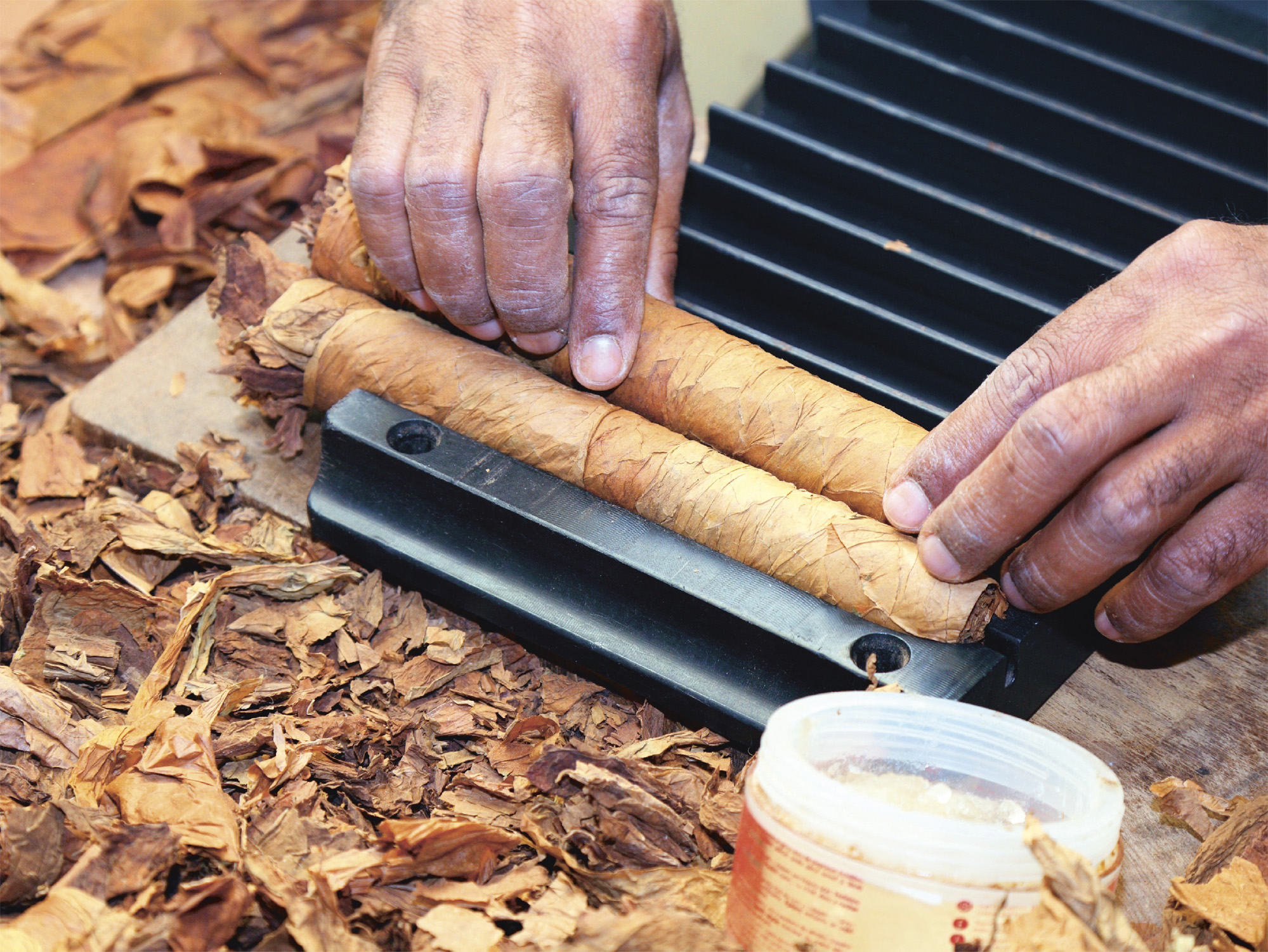
t A torcedor rolling a capote around the tripa of a cigar by hand
Cigars were used by the indigenous Indians and are now an inextricable part of Cuba’s culture and history. After Columbus’s voyage, tobacco, then regarded in Europe as having therapeutic qualities, was imported to Spain and, later, the rest of the world.
HOW CIGARS ARE MADE
Cigar manufacturing is a real skill that Cubans hand down from generation to generation. The tobacco plant (Nicotiana tabacum) is harvested between November and February. The leaves are tied in bunches and then dried in barns for 45 to 60 days. They are then transported to a fábrica (factory) where a torcedor (cigar roller) makes them into cigars. The capote (wrapper leaf) is rolled around the tripa (filler leaves), which have been selected for their flavour. This in turn is covered by the capa (the smooth leaf on the outside of the cigar). The cigar is then trimmed.
Experience Centro Habana and Prado

Brands of Cuban cigars
Montecristo
This best-selling brand earned its name because the novel The Count of Monte Cristo was often read by a lector on the cigar rolling floor.
Cohiba
The Cohiba was created for Fidel Castro in 1966 and was not available to the general public until 1982.
This brand was established in Havana in 1845.
Romeo y Julieta
Named after Shakespeare's play, this was Winston Churchill's favourite brand.
H Upmann
Boxes of these cigars depict the seven gold medals that have been awarded to the brand.

t Havana’s Barrio Chino bathed in golden sunlight
The Chinese quarter of Havana, the Barrio Chino, now occupies a small area defined by calles San Nicolás, Dragones, Zanja and Rayo. Its heyday was during the early 1900s, when Barrio Chino was home to around 10,000 Chinese people; it was the largest Chinatown in Latin America. The bustling area contained numerous Chinese businesses – including four Chinese-language newspapers – as well as community and cultural associations, which ran communal spaces such as the Chung Wah Casino. Much of the Cuban-Chinese population left after the Cuban revolution in 1959, when businesses were nationalized by the Communist government.
Today, Barrio Chino is more of a historical record than a thriving Chinatown. All the Chinese shops are concentrated in the so-called Cuchillo de Zanja area (around the Zanja and Rayo crossroads). The architecture is not particularly characteristic, except for the quarter gate, which is topped by a pagoda roof. Another, much more impressive portico, in the Ming and Ching styles, was constructed in 1998 at the corner of Calle Dragones and Calle Amistad. It is almost 19 m (62 ft) wide and was donated to Cuba by the Chinese government.
The Barrio Chino is also home to the Iglesia de la Caridad, dedicated to Cuba’s patron saint. The church has a popular statue, of a Virgin with Asian features, which was brought here in the mid-1950s.
Experience Centro Habana and Prado
The Chinese Community in Havana

The first Chinese people arrived in Cuba in the mid-1800s to work in the sugar industry and were treated like slaves. Eventually gaining their freedom, they began to cultivate small plots of land in Havana, and in one of these, near the present-day Calle Salud, they grew Cuba’s first mangoes. This fruit was an immediate and spectacular success with the local population. Chinese restaurants began to appear in the area after the second wave of Chinese immigrants arrived from California (1869–75), armed with their American savings. While maintaining their own cultural traditions, the Chinese community has embraced their Cuban identity, sharing in the island’s lot and contributing to its development. A black granite column at the corner of Calle Linea and Calle L remembers the Chinese who fought for Cuban independence.
Did You Know?
Before the revolution, the Shanghai Theatre in Barrio Chino was the centre of Havana’s red light district.
This was the tallest building in Havana at the time of its inauguration, in 1927, as the headquarters of the United States-owned Cuban American Telephone and Telegraph Company. Designed by architect Leonardo Morales, it is an astonishing example of flamboyant Spanish Plateresque architecture, towering 62 m (203 ft) over Barrio Chino, with its stepped façade ascending to an elaborate tower, which gleams in the light. Today, the ornate structure houses the offices of ETECA, the state-run Cuban telephone company.
Visitors to the building head straight for the Museo de la Telecomunicaciones on the ground floor. Relating the history of the telephone, the museum features interactive exhibits, including a functioning switchboard dating from 1910 and many other antique devices.
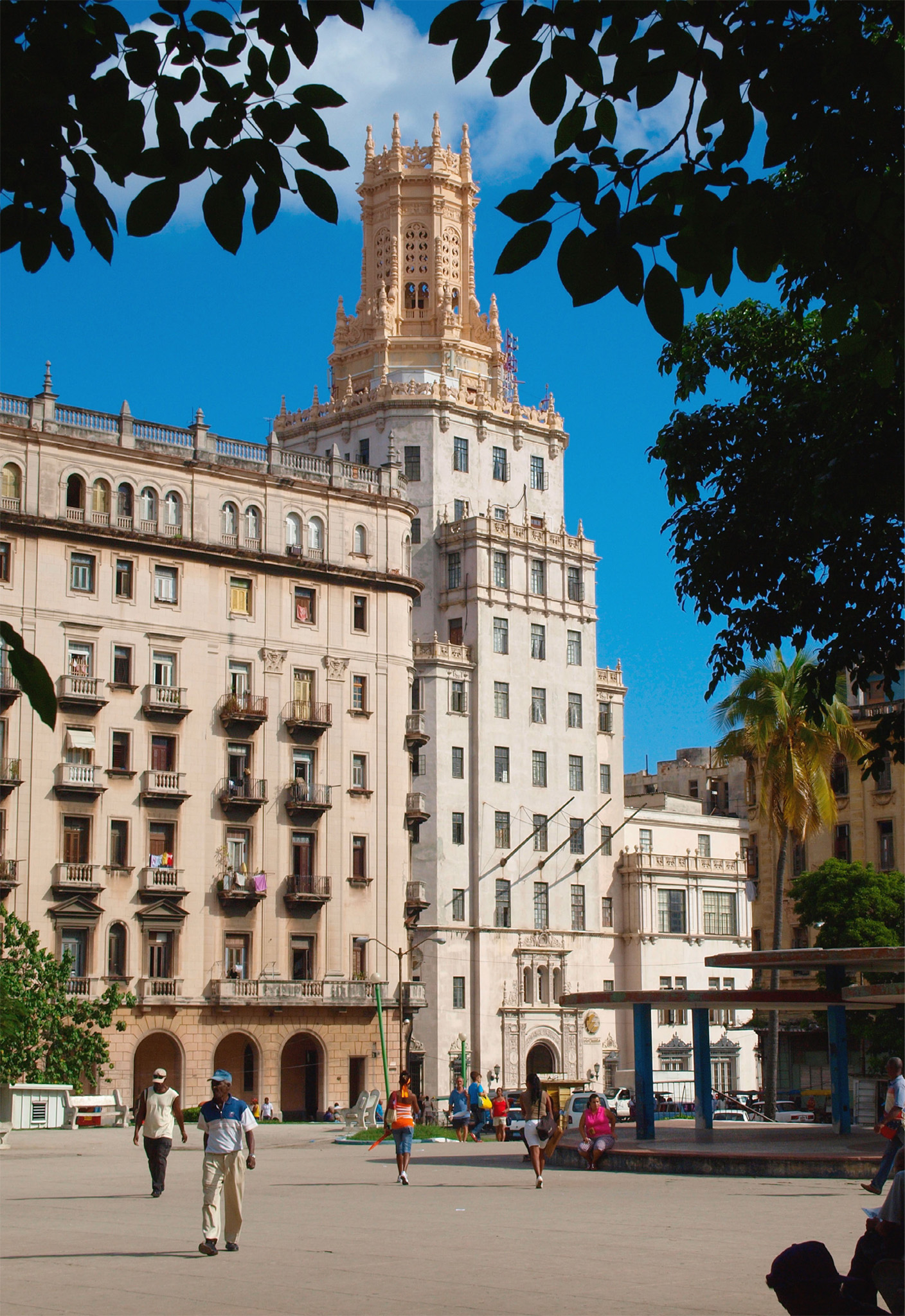
t The grand exterior of the Edificio Cuban Telephone Company
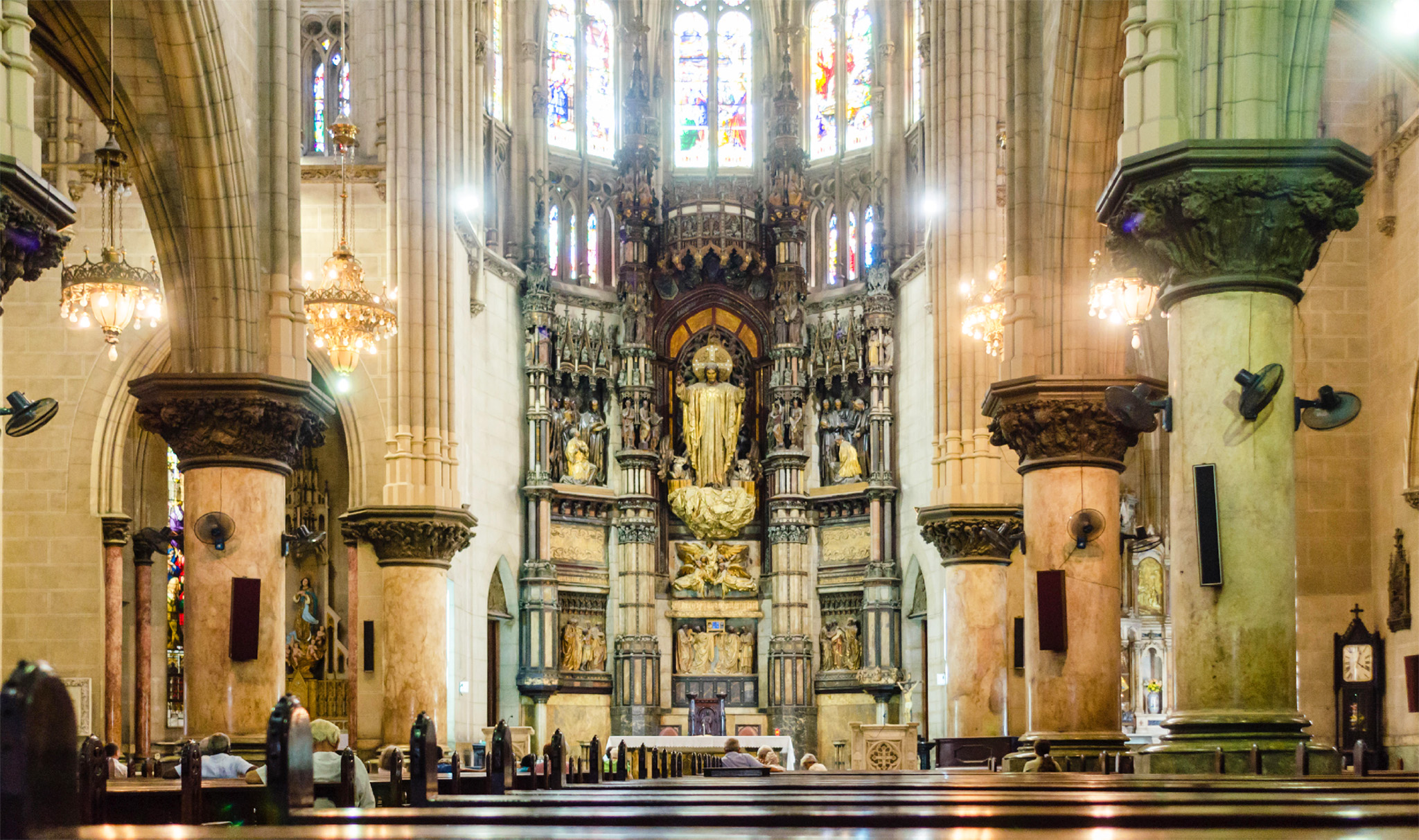
t The magnificent altar of the Neo-Gothic Iglesia del Sagrado Corazón
Although incongruously hemmed in between apartment buildings, with its distinctive white steeple rising above the surrounding buildings of Centro Habana, the Church of the Sacred Heart of St Ignatius of Loyola can be seen from much of the city. The 77-m- (253-ft-) high spire, the tallest in Cuba, is topped by a 4-m- (13-ft-) high bronze cross. Colloquially known as Iglesia de la Reina, the church was designed by architect Eugenio Dediot in 1914, on the order of the Jesuit priest Luis Gorgoza, and is a rare example of the Neo-Gothic style in Cuba. It was consecrated in 1923 and has been holding services every day (at 8am and 9pm) since.
Dominating the façade is a figure of Christ resting on three columns decorated with a capital depicting the parable of the prodigal son, with 32 gargoyles inset on either side. The interior, with triple naves supported by six columns to each side and a floor inlaid with stone and mosaic glass tiles, has 69 elaborate stained-glass windows narrating the life of Christ, as well as a wealth of stuccowork and pointed arches. A Byzantine-style Sacred Heart with sculptures of saints and prophets is on the high altar. Crafted of alabaster, wood and bronze, it was made in Madrid.
Experience Centro Habana and Prado
|
eat La Guarida Featured in the film Fresa y Chocolate, La Guarida claims to be Cuba’s most famous restaurant and has served celebrities including Beyoncé. Set in a dilapidated tenement building, it serves superb Cuban fusion fare. S2 ⌂ Calle Concordia, 418 ∑ laguarida.com \ Casa Miglis This Swedish-owned paladar serves international fusion dishes. Look out for the Swedish design touches inside this personality-filled townhouse. S2 ⌂ Calle Lealtad, 120 ∑ casamiglis.com \ |

t Salvador González Escalona’s famous mural, with its Santería symbols
This narrow, colour-drenched, two-block-long callejón (alley) in the working-class Cayo Hueso quarter is a curious open-air living art installation, cultural venue and visually stunning expression of Afro-Cuban ethnology. Its name derives from a legendary French-German resident called Fernando Belleau Hamel, a wealthy trader who owned much of this area and built housing for workers here in the early 20th century.
In 1990, self-taught artist Salvador González Escalona began decorating the alley outside his home with surreal street art infused with Santería symbols. His inspiration came from a desire to pay homage to his multi-ethnic cultural roots and his work represents all the religious cults and movements of African origin that are still active in Cuba today.
Extending for 200 m (656 ft), the murals cover entire building façades. The alley is studded with shrines to the orishas of Santería; images of African gods and Abakuá devils; a Nganga, one of the large cauldron- like pots used in Palo Monte, the religion of former Bantu slaves from the African Congo; and sculptures comprising bathtubs, typewriters and other repurposed objects.
Every Sunday at noon, Callejón de Hamel explodes with vivacious rumba performances, pulsating with the beat of tambores (drums), rhythmic chants and frenetic dancing, attracting locals and tourists alike. Residents have set up small bars, restaurants and shops selling hand-crafted religious objects along the street. González’s own grotto-like home has been transformed into an art-festooned gallery.
One block to the east, the curvaceous Edificio Solimar apartment complex, designed in 1944 by Manuel Copado, is an astounding example of “Streamline” Art Deco.
Experience Centro Habana and Prado
THE MALECÓN

t The imposing Monumento a las Víctimas del Maine
No other place represents Havana better than the Malecón, and no other place thrills tourists and locals so much. This seafront promenade winds for 7 km (4 miles) alongside the city’s historic quarters, from the colonial centre to the skyscrapers of Vedado, charting the history of Havana from past to present.
The Malecón boasts some of the city’s most unique architecture, including the “Ataud” (the coffin), a 1950s skyscraper whose name derives from the shape of its balconies, and the Caryatid building, which has Art Deco-style female figures supporting the loggia. Look out for the Monumento a las Víctimas del Maine, which stands in one of the wide stretches on the edge of Vedado. The area between Prado and Calle Belacoaín is known for its pastel buildings, faded in the sun and salty air. The Havana seafront is especially magical at sunset, when the colours of these buildings are accentuated.
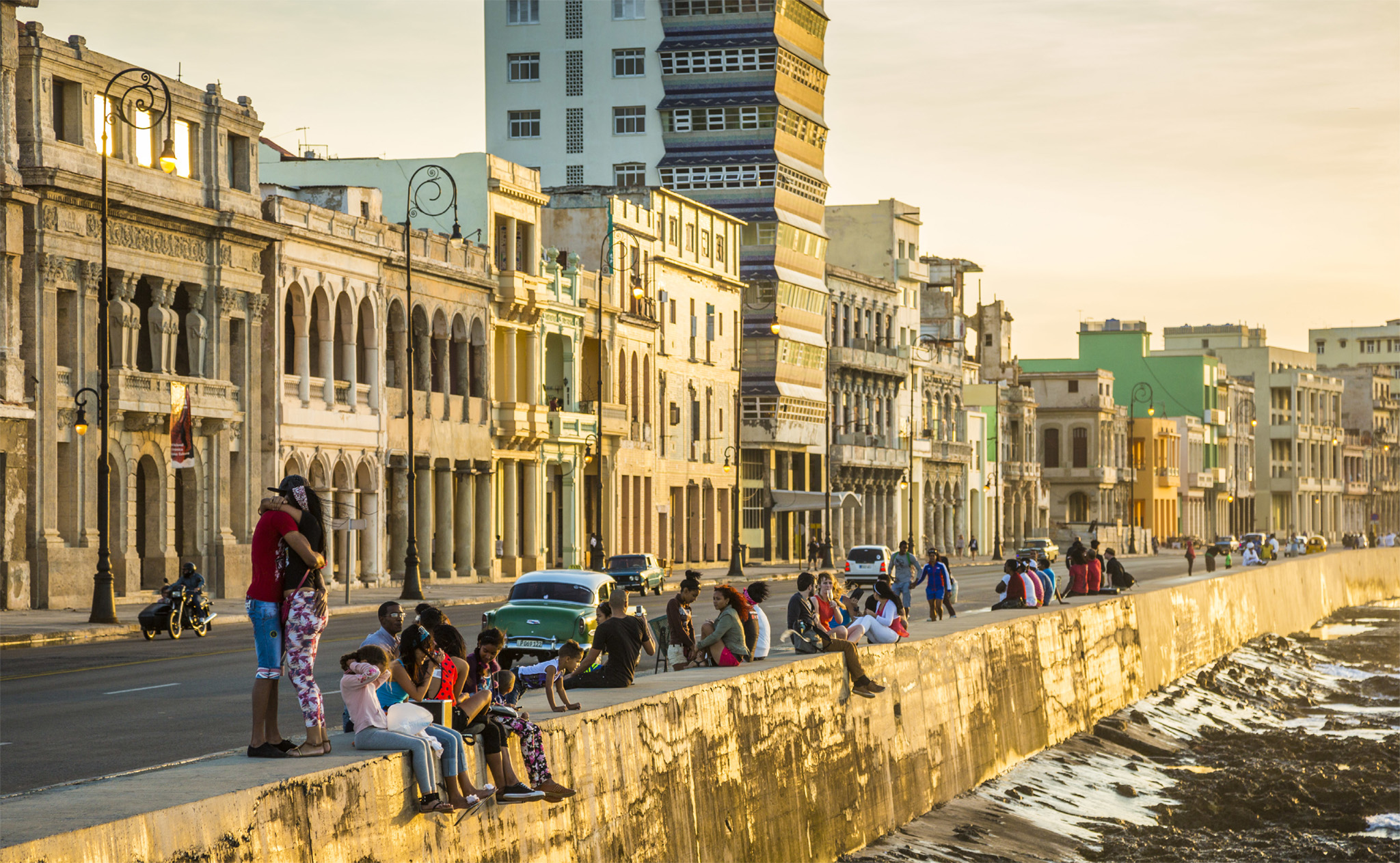
t People relaxing in front of the Malecón’s ubiquitous pastel buildings

Hidden Gem
Copper Church
At Calle Manrique 570, you’ll find the 19th-century Iglesia Nuestra Señora de la Caridad del Cobre (Church of Our Lady of Charity of Copper). Admire the Romanesque façade and then step inside to see the splendid gilt altar. The church draws both Catholics and adherents of Santería.
Experience Centro Habana and Prado
|
drink Sia Kara Highly regarded for its mojitos, this trendy bohemian bar occupies a loft-style lounge complete with off- beat furnishings. U3 ⌂ Calle Industria, 502 § 7867 4084 La Guarida After dining at La Guarida, head to the chic rooftop lounge bar for a cocktail. S2 ⌂ Calle Concordia, 418 ∑ laguarida.com Nazdarovie This Russian-themed bar-restaurant overlooks the Malecón. U1 ⌂ Malecón, 24 § 7860 2947 Sloppy Joe’s Made famous by Our Man in Havana, this legendary bar is true to the 1918 original. U2 ⌂ Avenida Zulueta Calles Animas § 7866 7157 |
Experience Centro Habana and Prado
Timeline |

1901The Castillo de la Punta was identified as the starting point of the Malecón. |

1902The open space in front of the Prado was completed. |

1921After expansion, the Malecón stretched as far Calle 23. |

1950sAs the fastest road in the city, traffic takes over the Malecón. |
